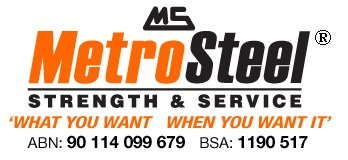We’re often asked by customers about the differences between hot vs cold rolled steel and what’s best. There are some rudimentary differences between hot and cold rolled steel and these relate to the way the steel is processed rather than the grade or specifications of each one. As its name suggests, hot rolled steel involves using high temperatures to roll the steel whereas cold steel involves cooling the steel and following this with annealing and/or tempers rolling. So, let’s take a closer look at each procedure/
Hot vs Cold Rolled Steel
Hot Rolled Steel
This involves rolling the steel at a high temperature which is typically in excess of the steel’s recrystallisation temperature – i.e. more than 1700˚F. Steel can be shaped and formed easily once it’s above its recrystallisation temperature and made in bigger sizes.
Hot rolled steel is usually less expensive than cold rolled steel because it can normally be manufactured without any delays in the process and unlike cold rolled steel, doesn’t require re-heating. However, when hot rolled steel cools down there is some shrinkage which gives less control over the size and shape of a finished product when comparing it to cold rolled steel.
Cold Rolled Steel
Cold steel is in effect hot steel that has been further processed in a cold reduction mill. During the procedure, the steel is slowly cooled at room temperature and sometimes followed with tempers rolling. This produces steel that has a closer dimensional tolerance and a broader range of finish surfaces. Often the term ‘cold rolled’ is mistakenly used on all products when, in fact, the term relates to flat sheet that is rolled and coil products.
When ‘bar products’ are referred to, they’re usually accompanied by a term ‘cold finish’ which means the metal has been cold drawn and/or followed by turning, grinding, and polishing. This has 4 main advantages:
- Cold drawing – this increases the tensile strength and yield often avoiding the need for expensive thermal treatments
- Turning – this gets rid of any surface imperfections
- Grinding – this narrows the initial size tolerance range
- Polishing – aesthetically improves the surface finish
In the hot vs cold rolled steel debate, customers should note that cold products provide a more superior finish when compared to hot rolled steel and are also superior in terms of tolerance, straightness, and concentricity.
Cold finished bars are more difficult to work with than hot rolled because there is more carbon present. However, the same can’t be said for hot vs cold rolled sheet steel. In this instance, the cold-rolled steel has a low carbon content and is usually annealed, which makes it softer than hot-rolled sheet.
Hot vs Cold Rolled Steel – Uses
So, now you know of the differences between hot and cold rolled steel, what is each product typically used for?
Hot-rolled steel
Products such as hot rolled steel bars are used in welding and construction trades to make I-beams and rail-road tracks, for example. In other words, hot steel is used where it’s not a necessity to have precise tolerances and shapes.
Cold-rolled steel
This is used in projects where surface finish, tolerance, concentricity, and straightness are the most important requirements.
At Metro Steel, we provide hot and cold rolled steel in a wide range of shapes including tubes, bars, plates, and sheets. Why not Metro Steel to discuss your requirements or drop by our purpose-built facility at 109 Kabi Circuit, Deception Bay, Qld 4508.
 Talk to an Expert (07) 3204 1000
Talk to an Expert (07) 3204 1000 Working Hours - Mon – Fri 7:00 AM – 4:00 PM
Working Hours - Mon – Fri 7:00 AM – 4:00 PM